Photogenic Experiences and Places to Photograph in Mexico
Mexico, the captivating land of tacos, iconic artist Frida Kahlo, vibrant Tequila, and unique cactus plants. Beyond its stereotypical portrayal in the media, Mexico unveils a rich tapestry of diverse landscapes, captivating culture, and storied history, making it a haven for photographers seeking to capture its multifaceted essence. After spending a few weeks immersing myself in the beautiful landscapes and energetic culture of this beautiful country, I am eager to highlight some essential experiences that should not be missed by photographers venturing to Mexico.
Mexico on a map doesn’t look that big but trust me when I say it is bigger than I expected. With its 32 states, Mexico offers a vast array of destinations to explore, making it challenging to decide where to go and what to see based on your available time. During my 2.5-week journey through Mexico with G Adventures on the Viva Mexico: Ancient Ruins + The Mayan Riviera itinerary, I discovered the convenience of their diverse range of tours, ideal for those with limited time who wish to experience as much as possible. These tours not only simplify your itinerary but also allow you to focus more on capturing memorable moments through your photography.
Written + Photographed by Julia Marr
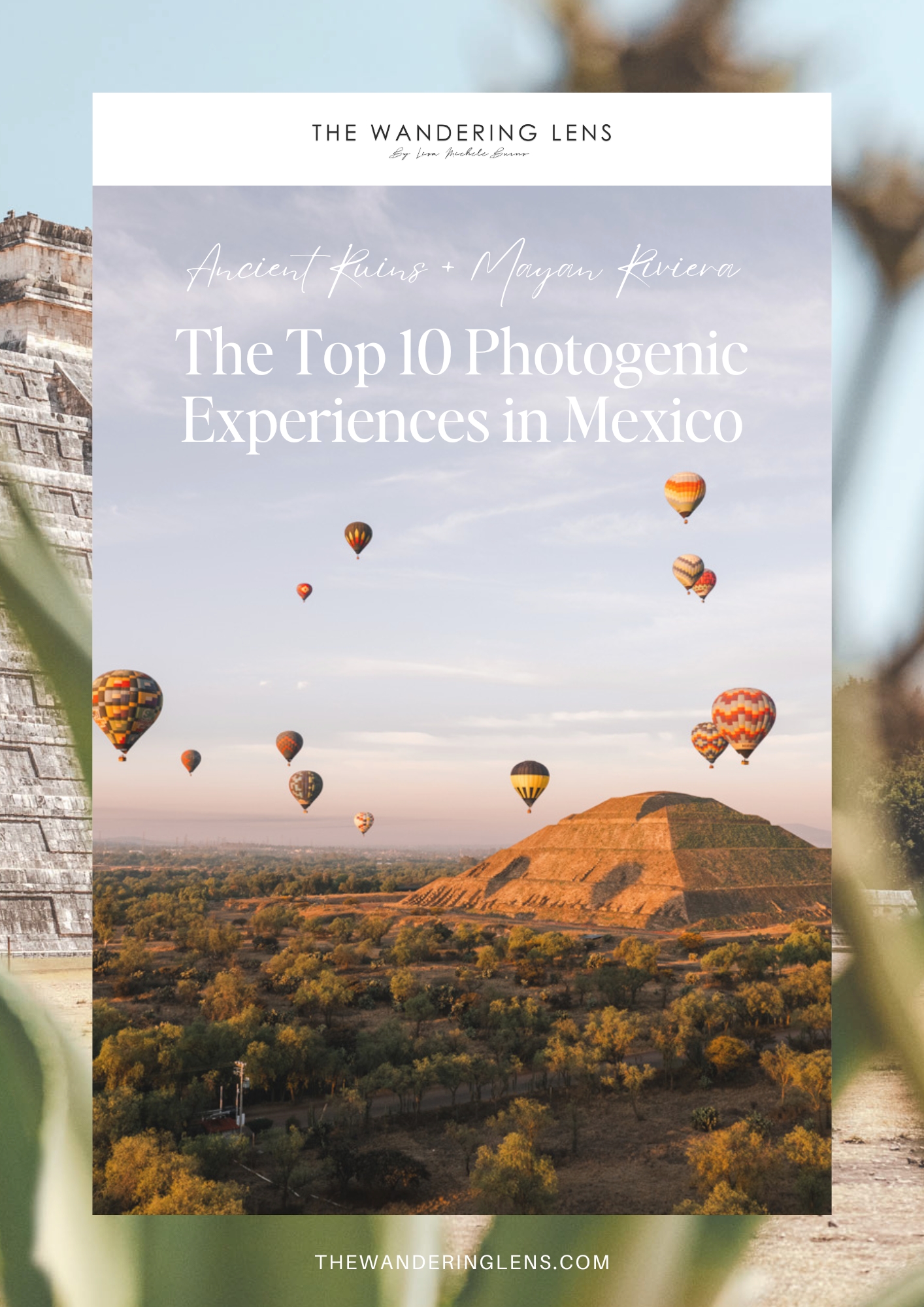
#1 Watch the sunrise in a hot air balloon over the pyramids of Teotihuacan.
Teotihuacan is an archaeological complex northwest of Mexico City, here you will find the temple of Quetzalcoatl, pyramid of the moon and pyramid of the sun.
The best way to see these pyramids is from above in a hot air balloon, not only do you get to see the vast size of these pyramids from above, but you get to experience soaring high in the sky with many other hot air balloons. This is the perfect photo opportunity to create beautiful imagery at all angles and you have the perfect light too.
I booked through Get Your Guide, and everything was super easy, they pick you up from your hotel at 4:50am and you drive roughly 50 minutes to San Juan Teotihuacan. They organise your groups and then you hop into the air balloon basket and away you go.
Photo Tip – I recommend using a versatile lens like a 24-70mm, as you can’t take bags with you on the balloon so changing lenses isn’t possible. To read more about photographing sunrise, take a peek at ‘Setting the Scene‘.
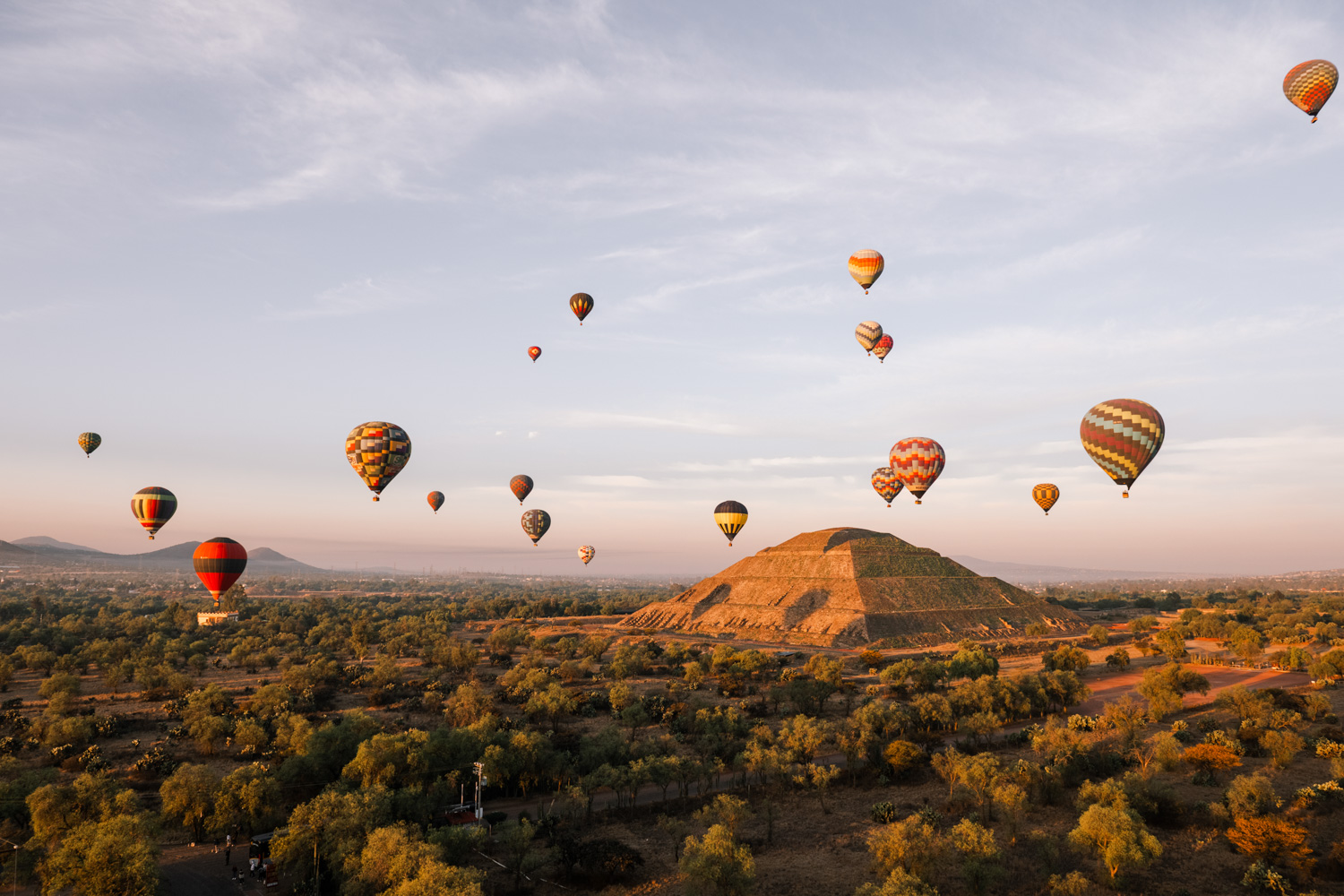
#2 Street photography in Oaxaca de Juárez
Oaxaca is a state in Mexico, Oaxaca de Juarez is the largest city in the state. It is a UNESCO World Heritage Site, it is known for beautiful historical architecture, vibrant streets, colourful markets and traditional cuisine. A few Highlights in the city include Oaxaca regional museum, Benito Juarez Market, Santo Domingo de Guzman Church.
A favourite spot of mine in Oaxaca was the neighbourhood of Jalatlaco, this is the perfect area to photograph all the colourful buildings, flags and culture in Oaxaca.
I recommend doing a walking tour, there are a few photography walking tours that are available. Walking tours are great to teach you about the history and the culture in the areas and show you the best places to go.
Photo Tip – I recommend waking up early before the crowds set in and using the early morning light to your advantage. Another idea is to find rooftops to shoot off to get a different perceptive.
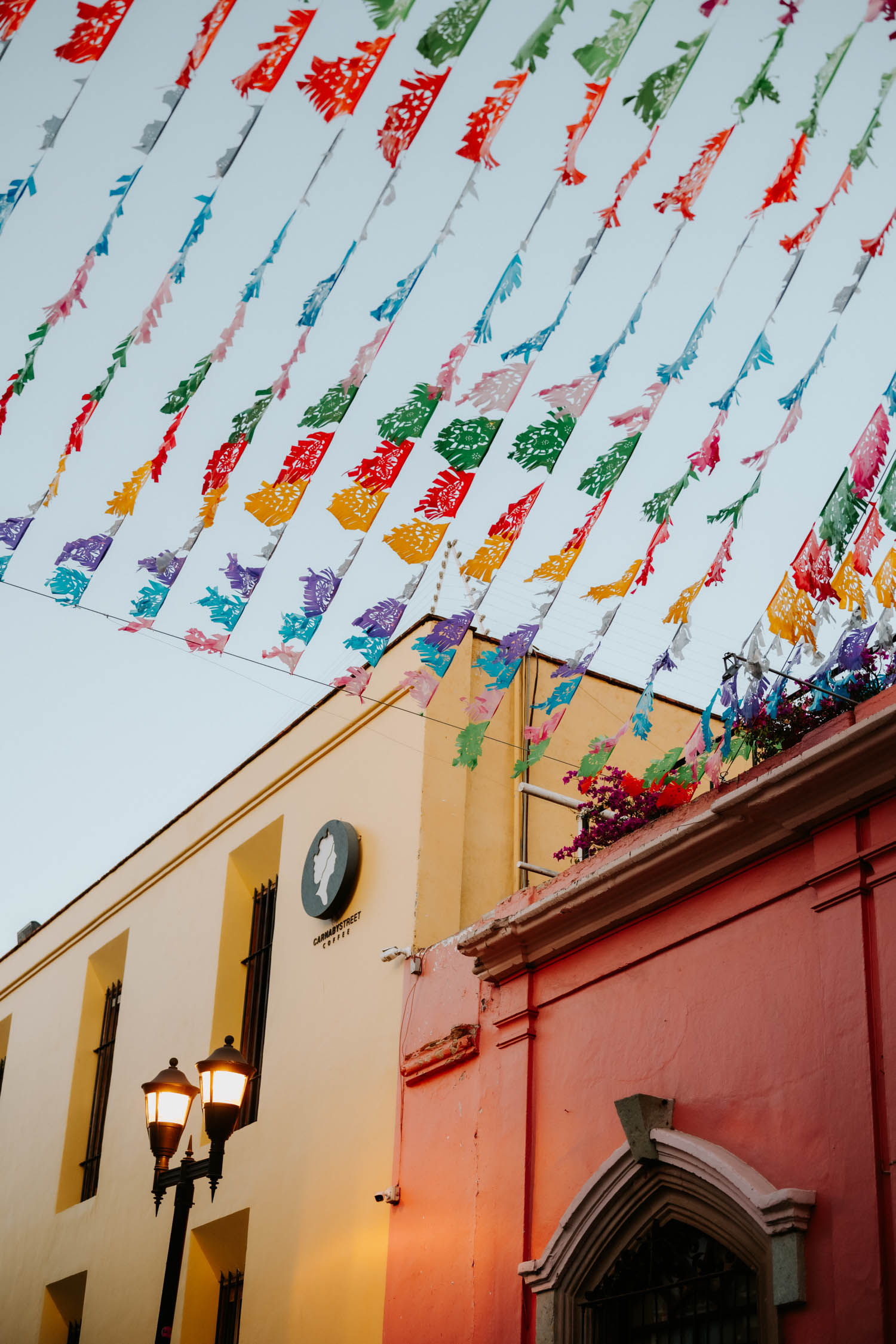
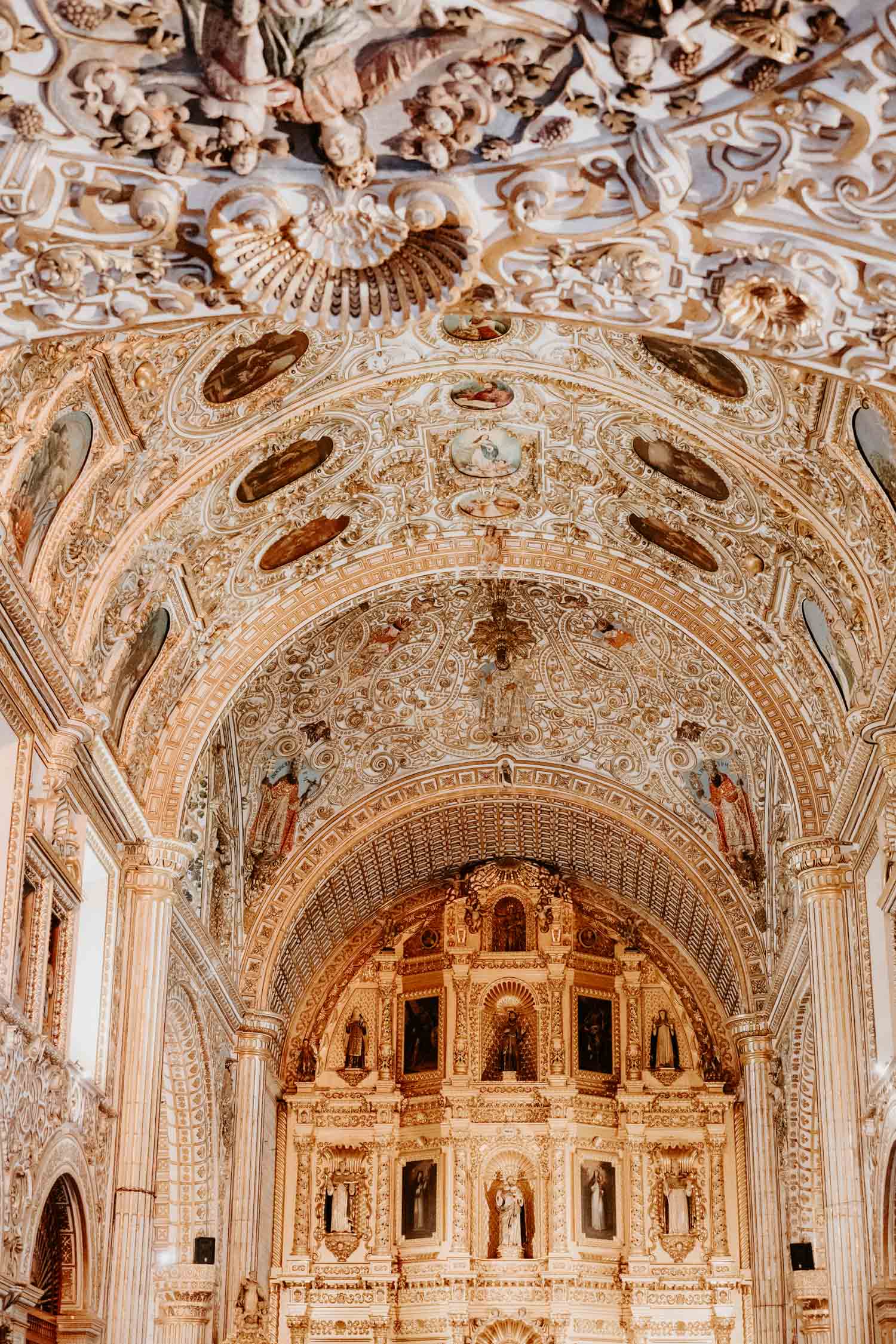
#3 Hierve El Agua
Hierve El Agua is a set of natural travertine rock formations in the state of Oaxaca. This waterfall was created by mineral water that pushes through limestone, settling onto the mountains edge creating this waterfall that looks frozen in time.
It is very different to other waterfalls that I have photographed before, but it’s an extraordinary site that shouldn’t be missed when visiting Mexico. It’s about 70km outside of Oaxaca city and best visited during a day trip from the city. Its open between 7am – 6:30pm, It’s worth finding a driver that will head out early to be the first ones there as it does get busy from around 9am.
Hire a local guide to take you around the waterfalls, there is a small hike and the whole experience goes for an hour. This is best to photograph the waterfall from all viewpoints including directly underneath. Then once you have all your images taken, enjoy a dip in the mineral pools on top.
Photo Tip – Use a polarising filter when photographing Hierve El Agua as it will most likely be under harsh direct sunlight and you will want to minimise as much glare as possible and darken the sky.
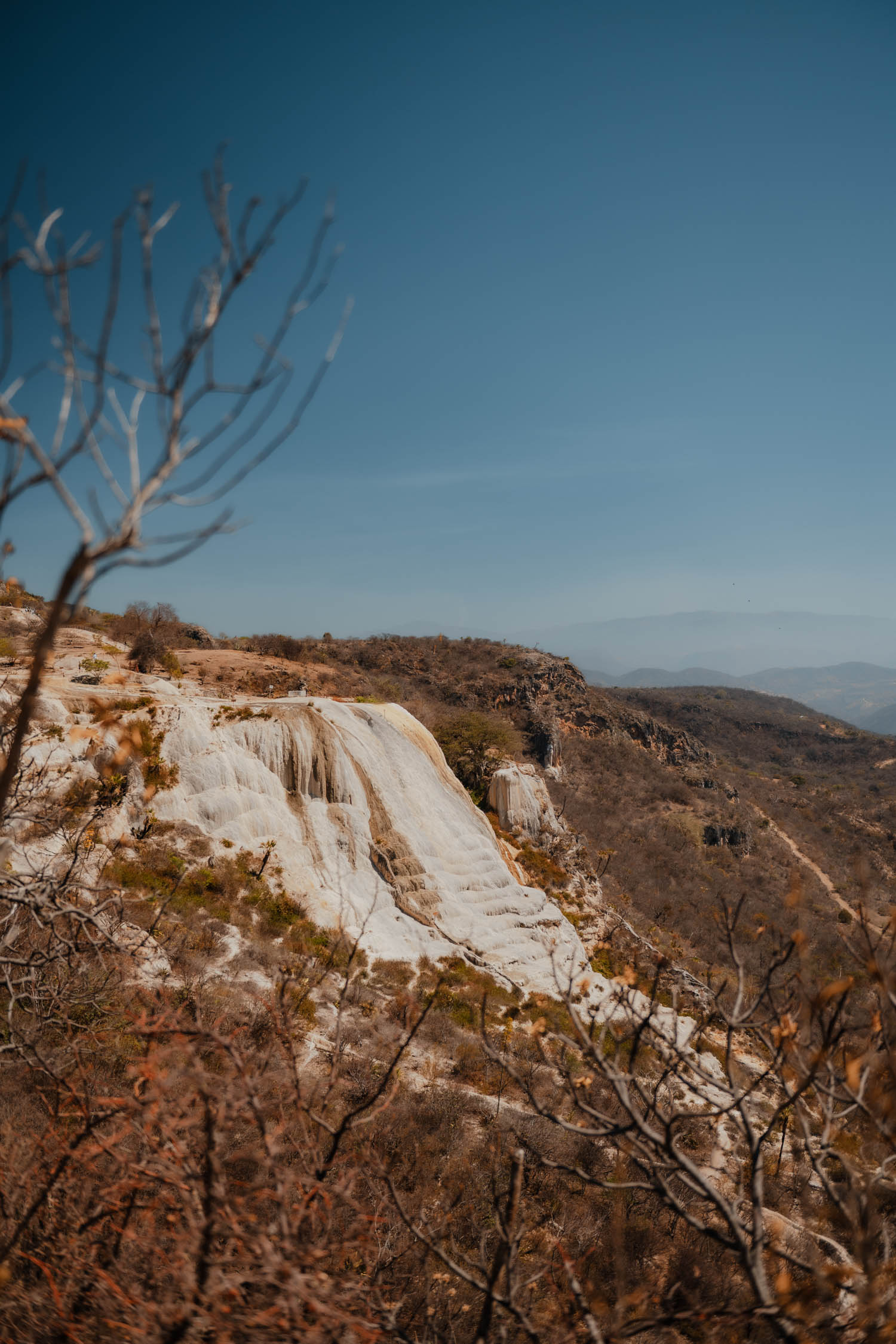
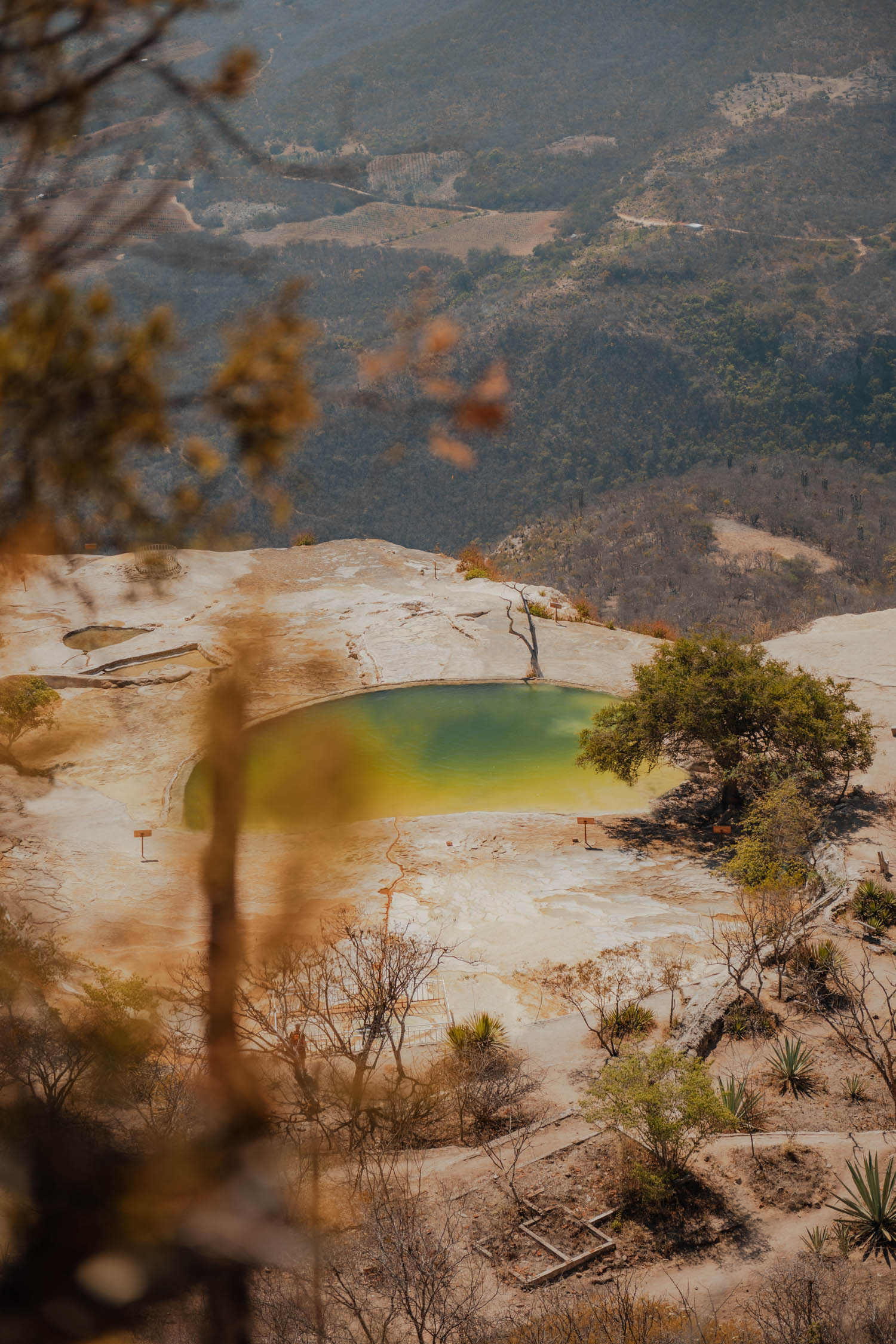
#4 Photograph Sunrise on Lake Bacalar
Bacalar Lagoon is a narrow freshwater lake, its known as the lagoon of seven colours from electric turquoise to deep indigo. The cause of this is from a mixture of the limestone content in the lake, the white sand, wind and sun, these all play a part in creating these magic colours. You won’t need much photoshop when taking photos here because what you see online is exactly what you see in person, it’s a truly beautiful place.
Photographing the sunrise is perfect here as it rises over the lake, there are many public jetties that you can photograph it from, and it is very quiet as most people aren’t awake at this time. I photographed the sunrise here for 3 days straight and every day it was beautiful to see, the colours each day were different, and it was nice to experiment a little with my photography.
Photo Tip – I like to start photographing sunrise 30 minutes before the sun is mean to rise, as I find that sometimes this is when the best colours shine through.
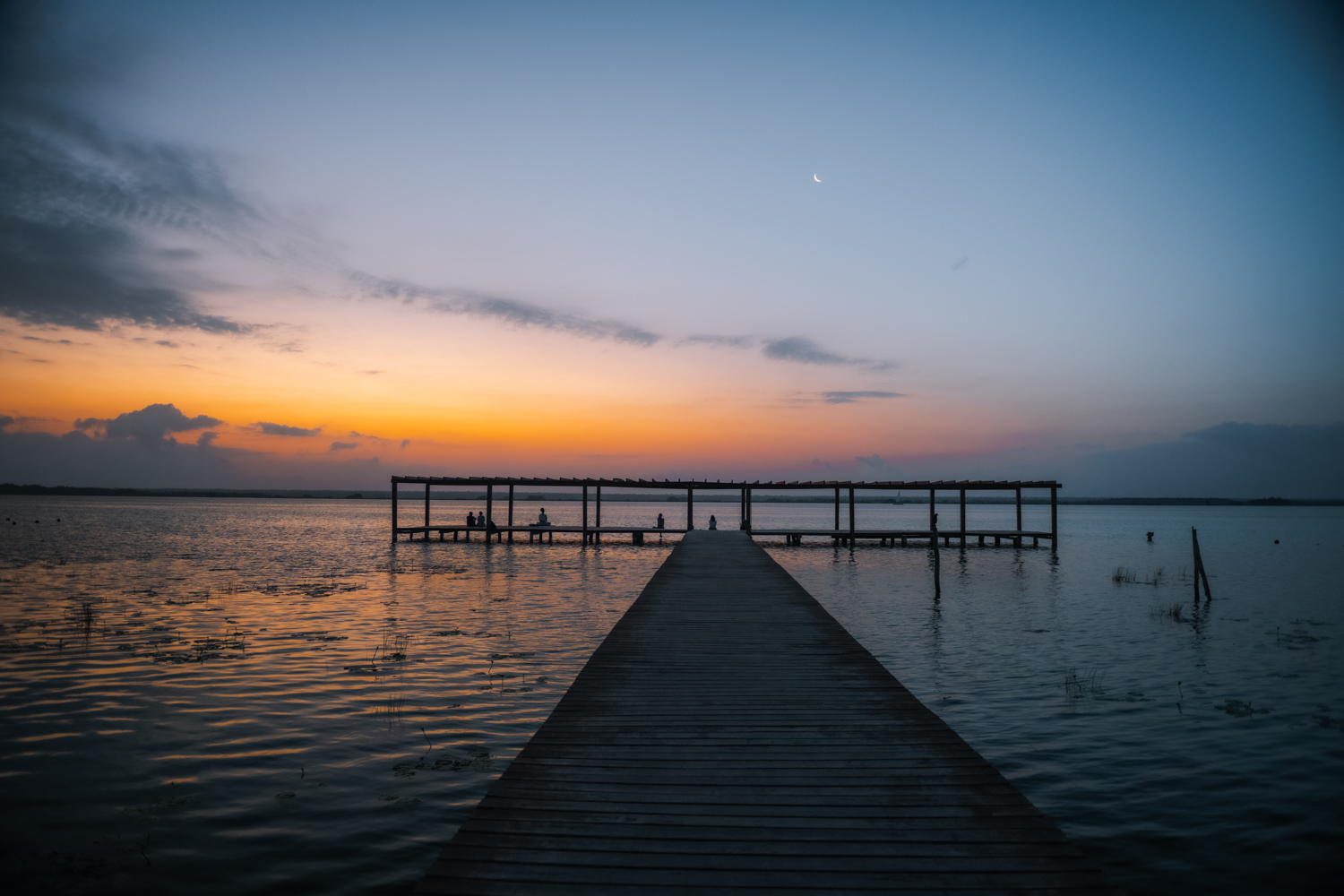
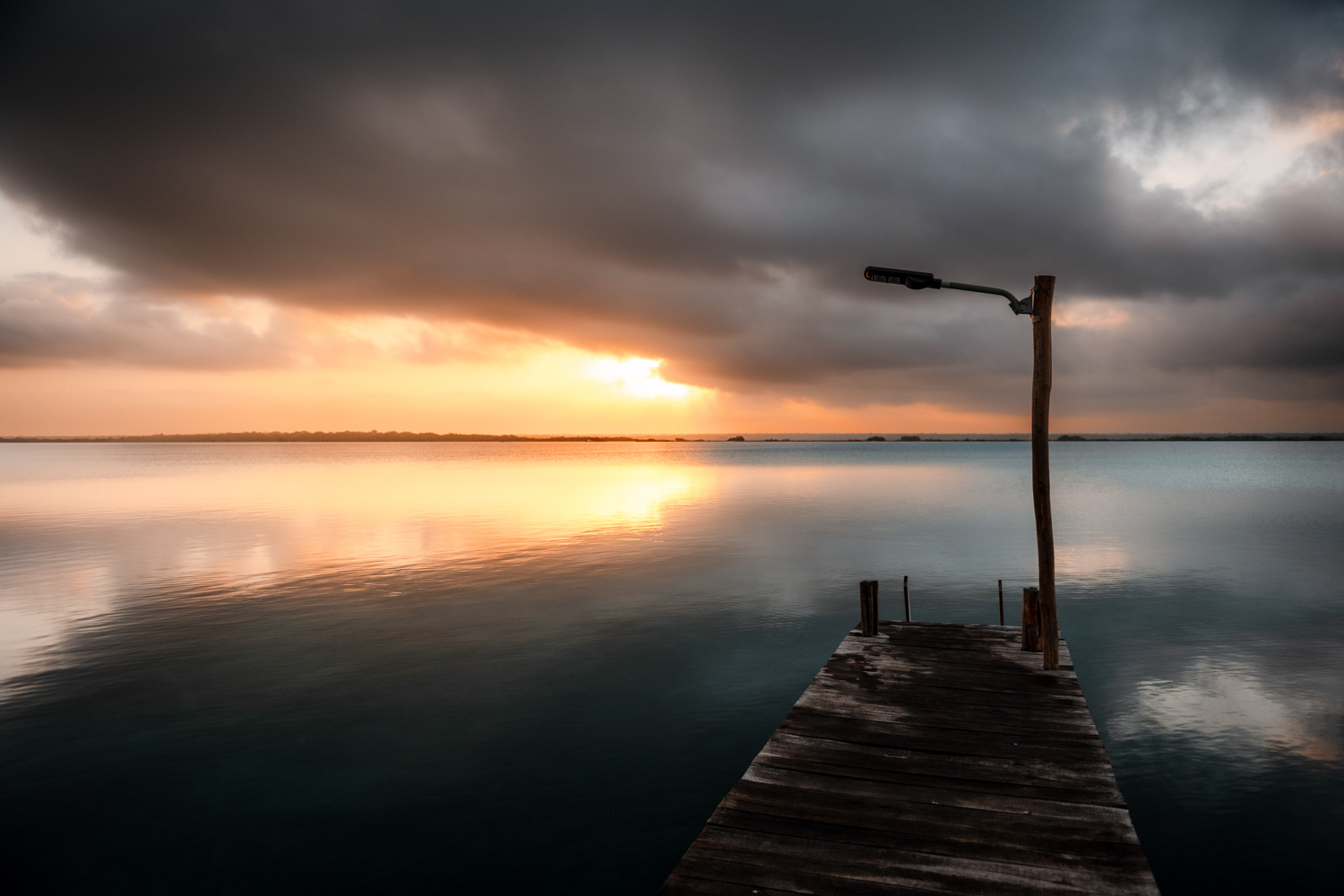
#5 Visit Chichen Itza
One of the seventh wonders of the world, Chichen Itza was a large city built by the Maya people around 600 A.D. It is an incredible archaeological site that holds important knowledge of history from these ancient times. It’s an incredible site to see and to learn about, after visiting here I have been very interested in learning about the Mayans and the ways to which they lived.
Chichen Itza is open to the public from 8am – 5pm, 7 days a week, its located in the state of Yucatan, eastern Mexico. Right in the middle of Merida Yucatan and the famous city of Cancún Quintana Roo. It gets very busy and hot; I recommend staying close by and getting there around 7:30am to wait in line to be one of the first through the gates. Also, you can hire a tour guide to teach you about the history and meaning behind the ruins, this is worth doing as you learn so much and it’s so interesting plus it adds an element to your photographs if you know exactly what you are photographing.
Photo Tip – The front of the Chichen Itza Pyramid is always the most crowded, I recommend framing your images with a plant in the foreground to create an image with minimal people. Otherwise around the back and towards the sides of the pyramid there tend to be less people, and these can also be a good angle to shoot on.
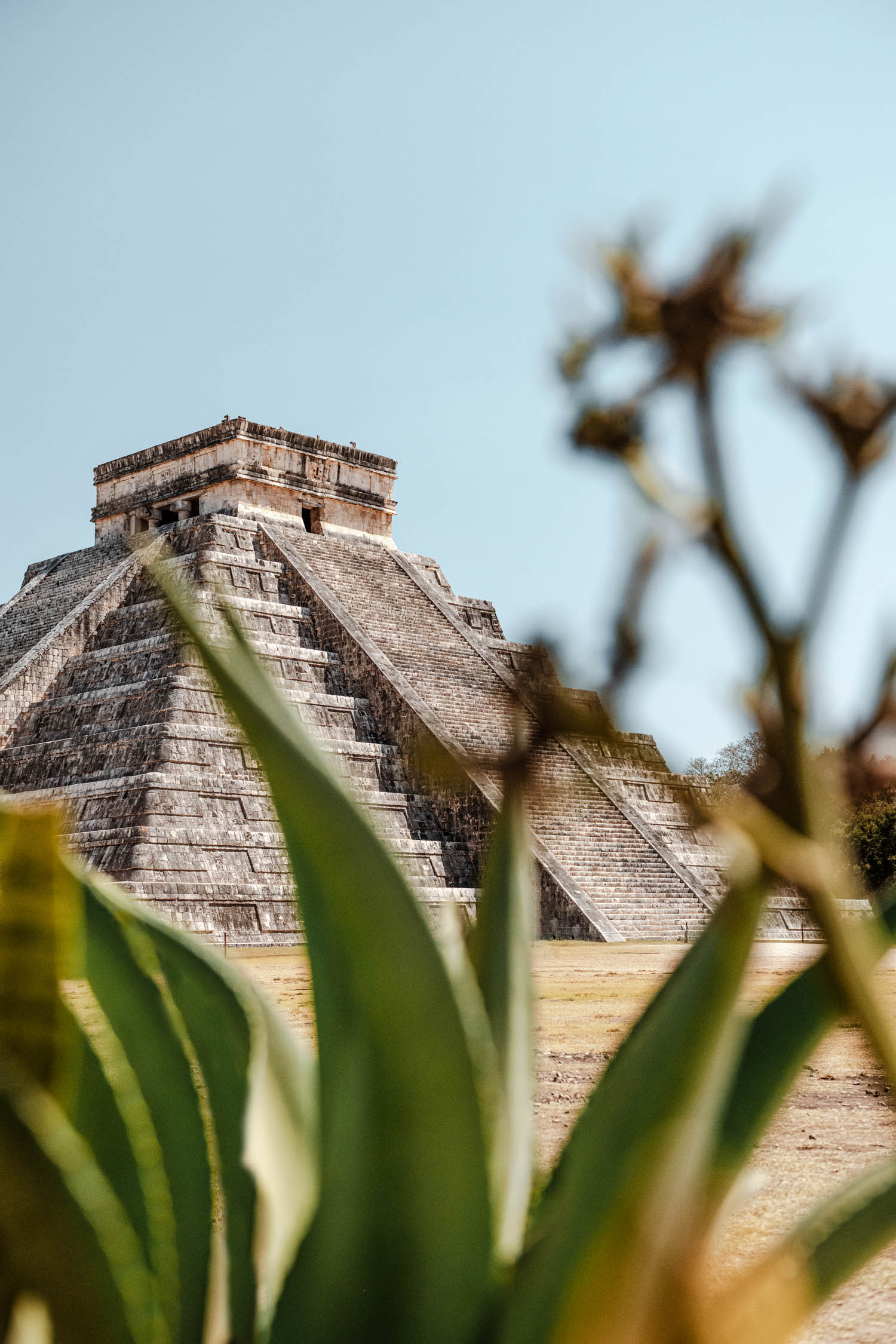
#6 Explore the Cenotes
With over 6,000 cenotes in Mexico, it can be a little tricky to know which ones are the best to photograph. Most of the cenotes in Mexico are in the state of Yucatan. There are many popular ones, and they are all unique in their own ways, it also depends on if you want to photography them from above or underwater.
Cenotes are natural wells, formed when limestone bedrock collapses and exposes water underneath. They are mainly fresh water, purified from the earth making them so clear and fresh.
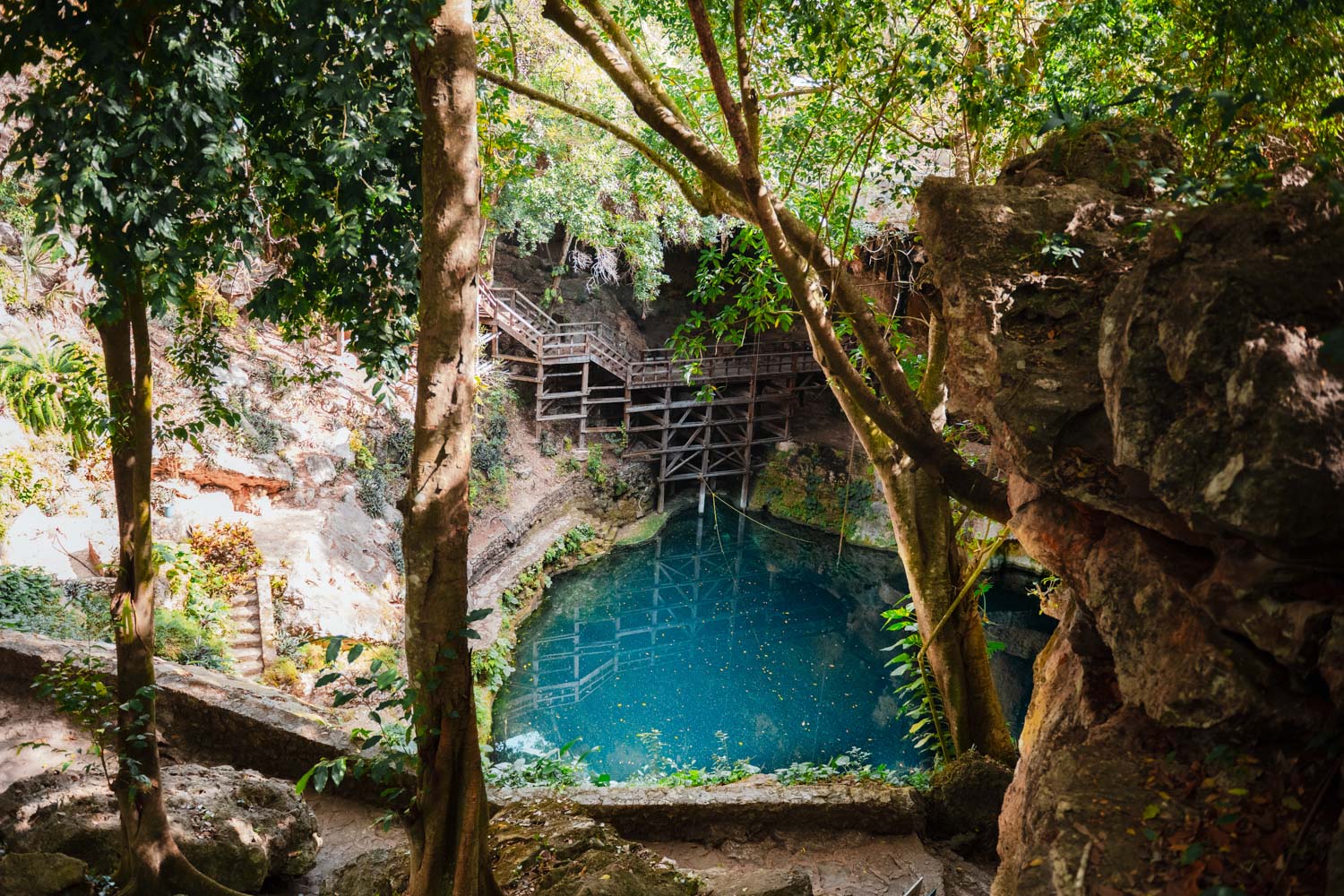
Below is a little list of the best ones for photography depending on what you would like to achieve with your images.
- Cenote Samula – Underwater photography, cave systems
- Ik Kil Cenote – Natural Sinkhole, natural appeal for photographers
- Suytyn Cenote – Instagram worthy moment with circular platform surrounded by clear turquoise waters.
- Cenote Zaci – Semi Open cave, high cliffs, waterfall (One of my favourites)
- Grand Cenote – Great for underwater, wildlife opportunities (Bats, turtles, crabs & fish)
Photo Tip – These cenotes can get very busy, arrive early to avoid large crowds and make sure it’s a sunny day to be able to capture the beautiful colours and underwater moments.
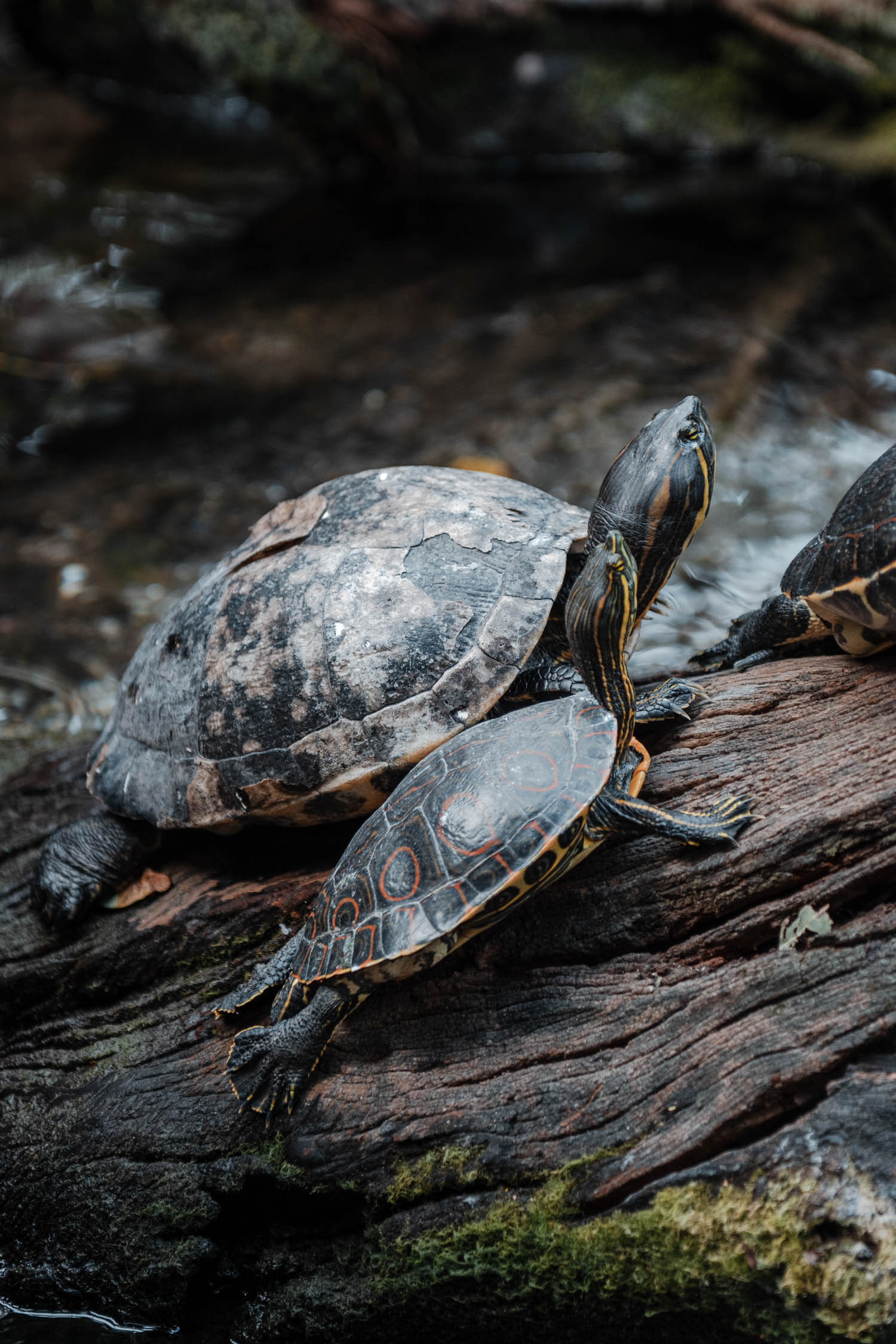
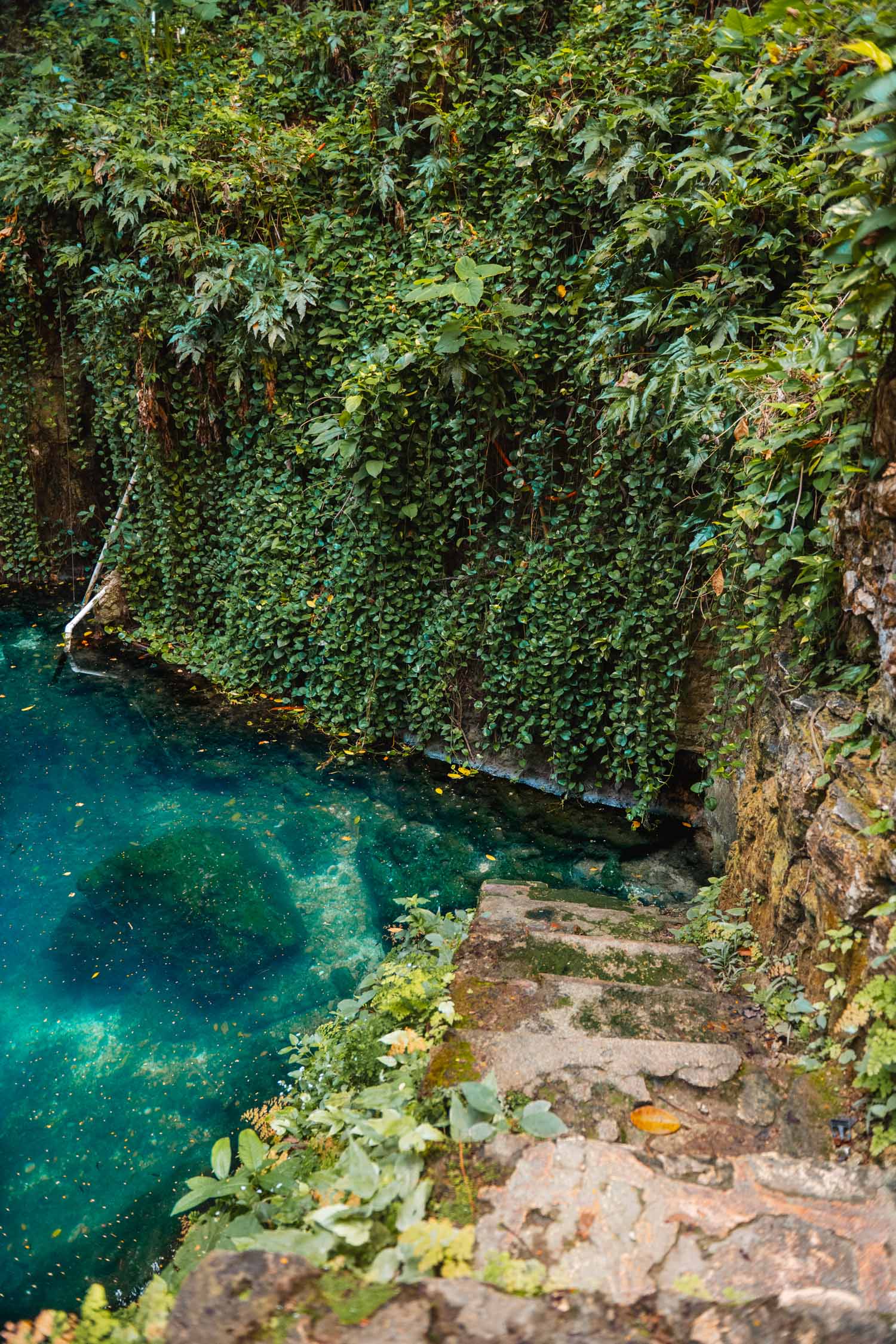
#7 Photograph Street Art
No matter where you go in Mexico there will be beautiful street art, stunning, colourful murals painted all over the cities and small towns that you will want to photograph. They vary from traditional art works to creative abstract murals, my top places to photograph street art are Mexico City, Oaxaca, San Cristobal and Bacalar.
If you solely want to photography street art in Mexico, you can book a street art walking tour and learn all about the beautiful artworks and artists.
There are also hidden street murals by the famous Diego Rivera in Mexico City to find.
Photo Tip – Use a wide-angle lens to be able to capture large artworks into a single frame. This will help show the scale of the artworks that you are photographing.
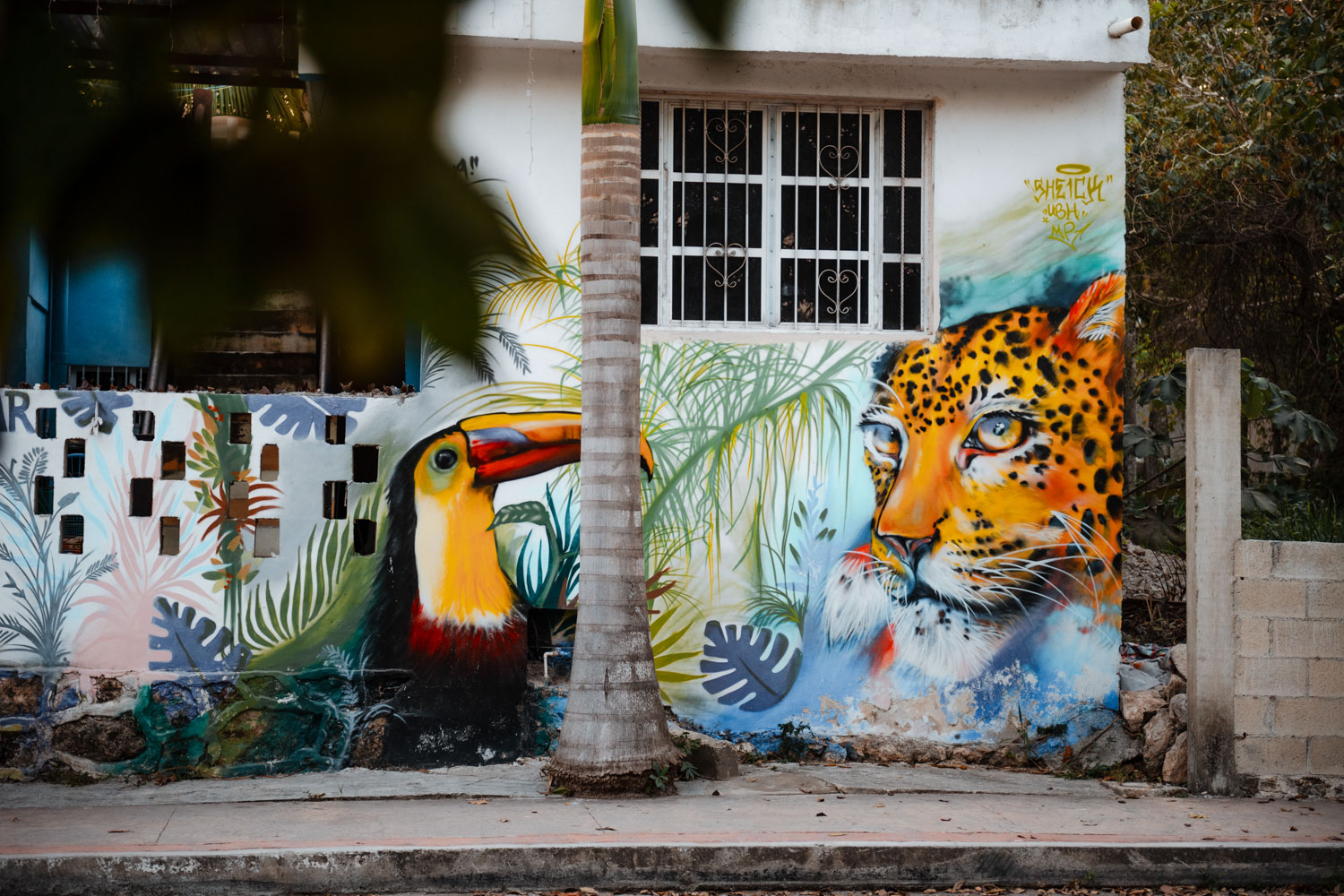
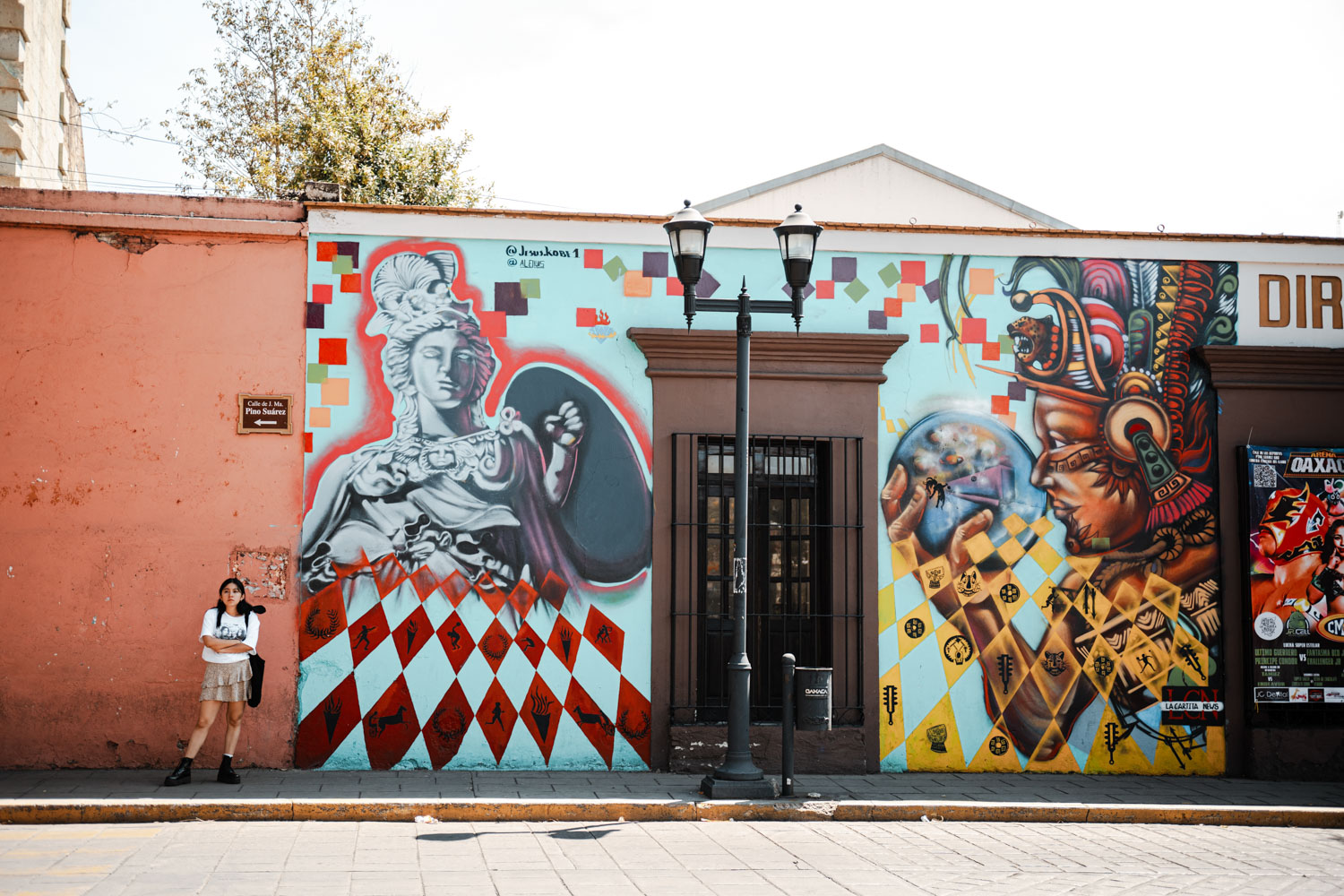
#8 Mayan Ruins – Tulum Archaeological Zone & Palenque
Other than Chichen Itza and Teotihuacan, there are around 200 other Mayan sites that we know about to visit that offer a different photographic experience. The two that I believe offers the most unique images are the Tulum Archaeological zone & Palenque.
Tulum Archaeological zone is a very scenic location, as it is situated right on the beautiful coastline of Tulum. The ruins here aren’t very big but they are beautiful, the temple of Frescoes hold some of the best-preserved painted murals that depict life and work of the Maya. There are stunning photo opportunities in the details of this site as well as the beauty of the surrounding natural elements.
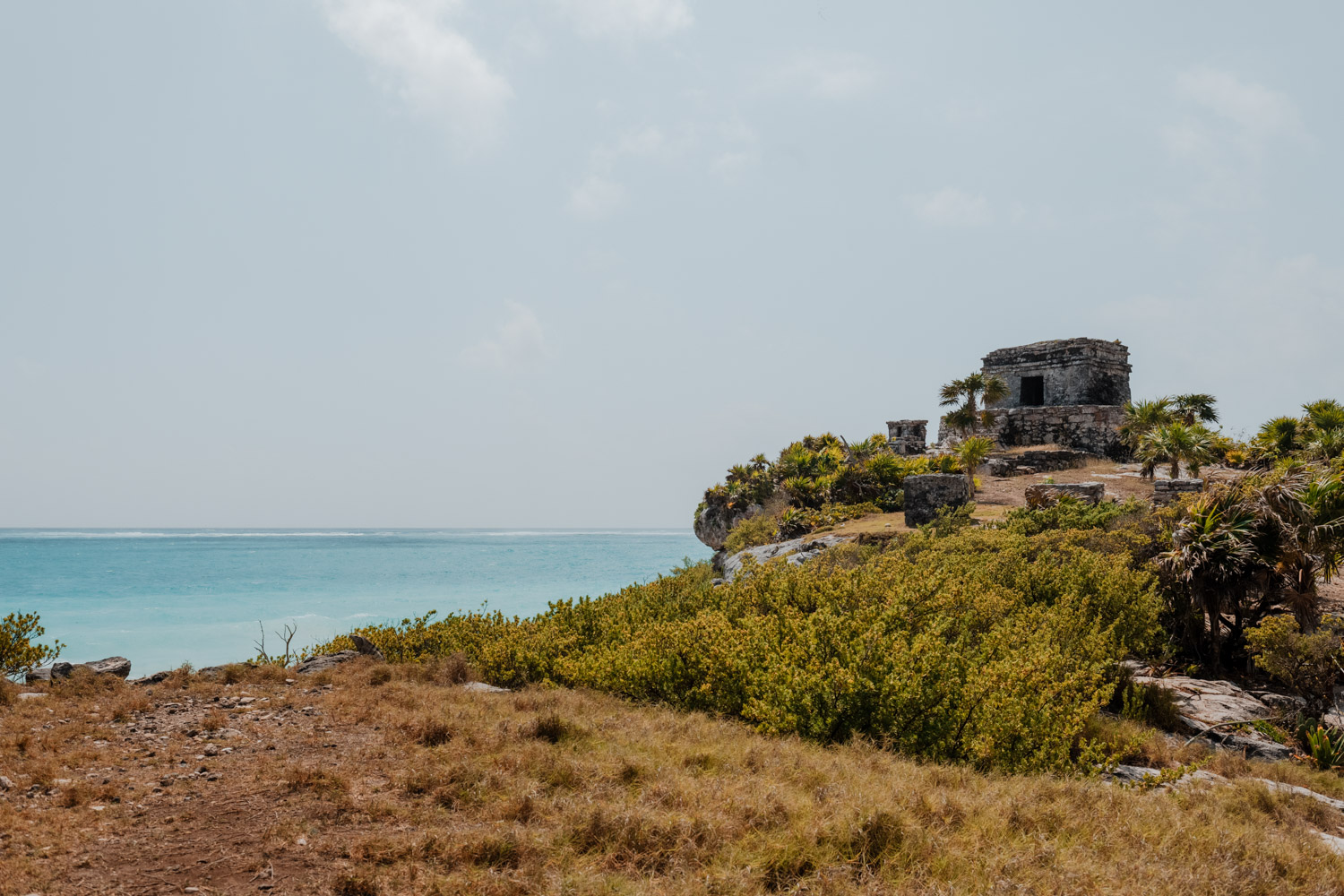
Palenque is in the state of Chiapas, this site is very special as it is surrounded by lush forests and waterfalls. It feels like a completely different world compared to the other Mayan sites in Mexico. They believe that only 10% of this ancient city has been excavated with the rest still covered by the dense forest, it’s a beautiful site to photograph.
Photo Tip – Don’t be afraid to zoom in and create detailed, cropped images of ruins. This allows for more variety and uniqueness to your photographs.
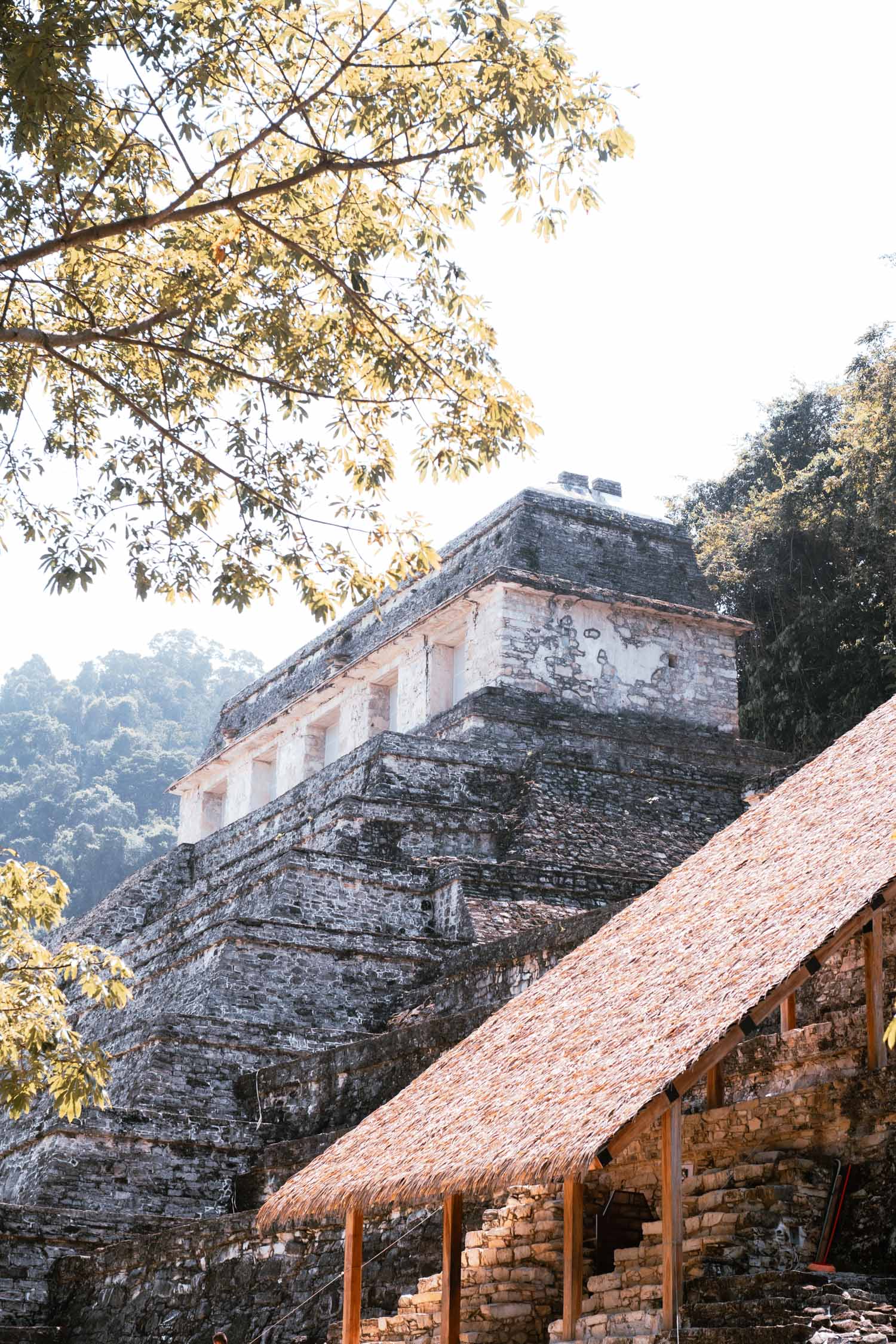
#9 Immerse Yourself in the Culture of Indigenous Communities
Everywhere I go I love to immerse myself in other cultures and learn about their beliefs and practices. I usually always do a homestay or book a trip to an indigenous community; I love being able to tell a story through my images of the way of life for these communities.
There are many different indigenous groups in Mexico, majority of indigenous populations are concentrated in the south-central and southern region of Mexico.
Many traditions in Mexico continue through silver-smithing, mosaics, textiles, pottery, basket-weaving and Alebrijes. Photographing these traditions is a beautiful way to connect with the indigenous people of Mexico, learn about their culture and use your images to educate others on traditional ways of life.
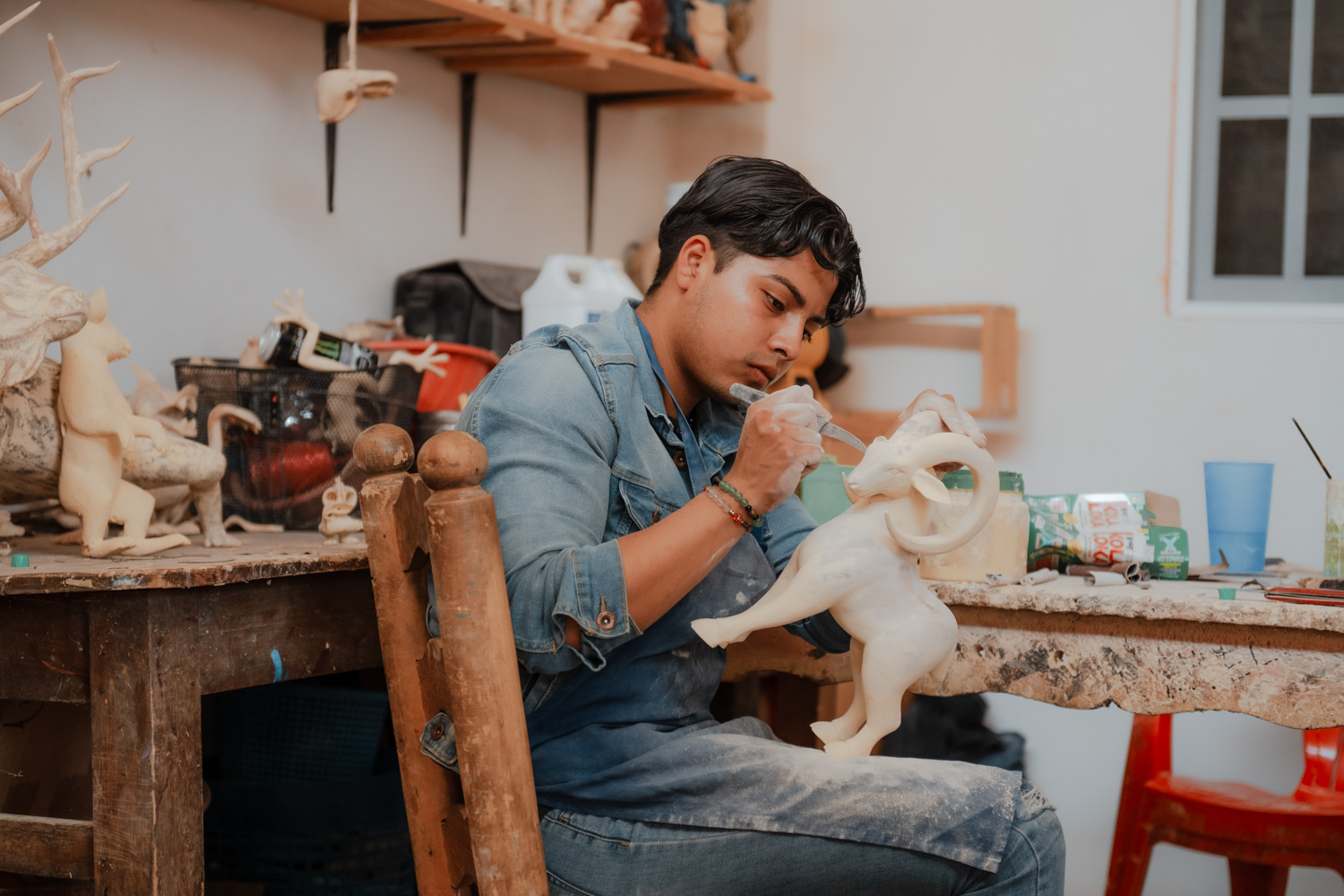
You can book tours to visit indigenous communities with local guides, this is a great way to support and give back to the indigenous people. If you are wanting something a bit longer a homestay would be a perfect option where you pay or trade services with a local family and really immerse yourself in their traditions and beliefs.
Photo Tip – Always ask permission to take photos. Sometimes I don’t want to miss the candid moment, so I will take the photo and then show the person that I took the photo of and ask if it is okay if I keep the photo, if they say yes then great, if they say no then I will delete it and respect their wishes.
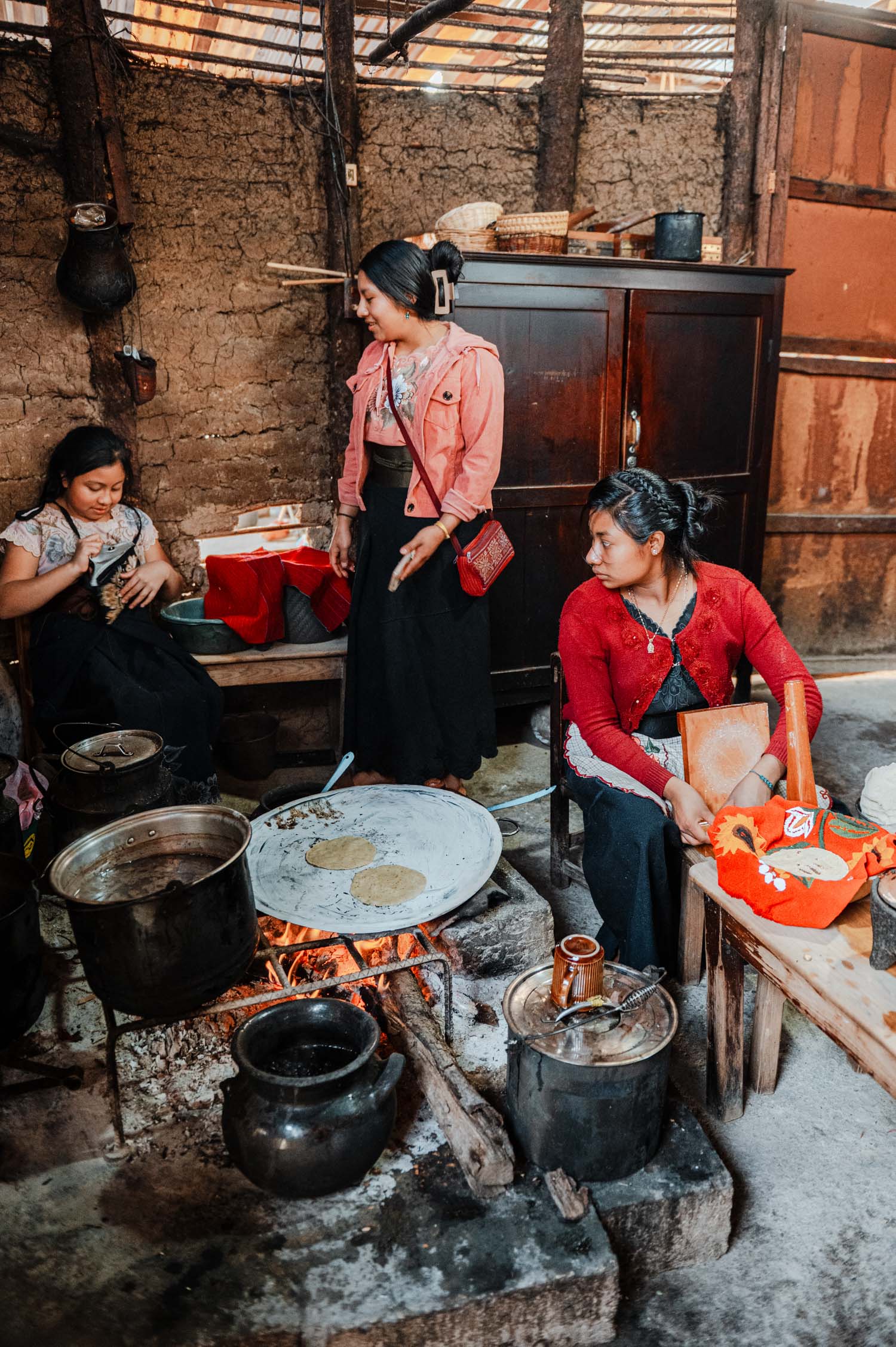
#10 Azul Agua Waterfalls
Azul Agua translates to Blue Water in English, In Mexico however it is series of waterfalls located on the Xanil River in the southern Mexican state of Chiapa. These waterfalls are quite easy to access, most commonly by catching public transport from Palenque or a day trip from San Cristobal and costs only 40 pesos to enter.
These waterfalls are best to photograph during the dry season (December – April) as this is when the water is bright blue in colour, but if you were to visit in the wet season it will still be worth a visit to see the mass of water flowing down these falls. If you have a drone, this is a great place to fly it and create some insane aerial photographs.
Photo Tip – Bring along a tripod and a ND filter to be able to create some long exposure magical of the waterfalls at any time of the day.
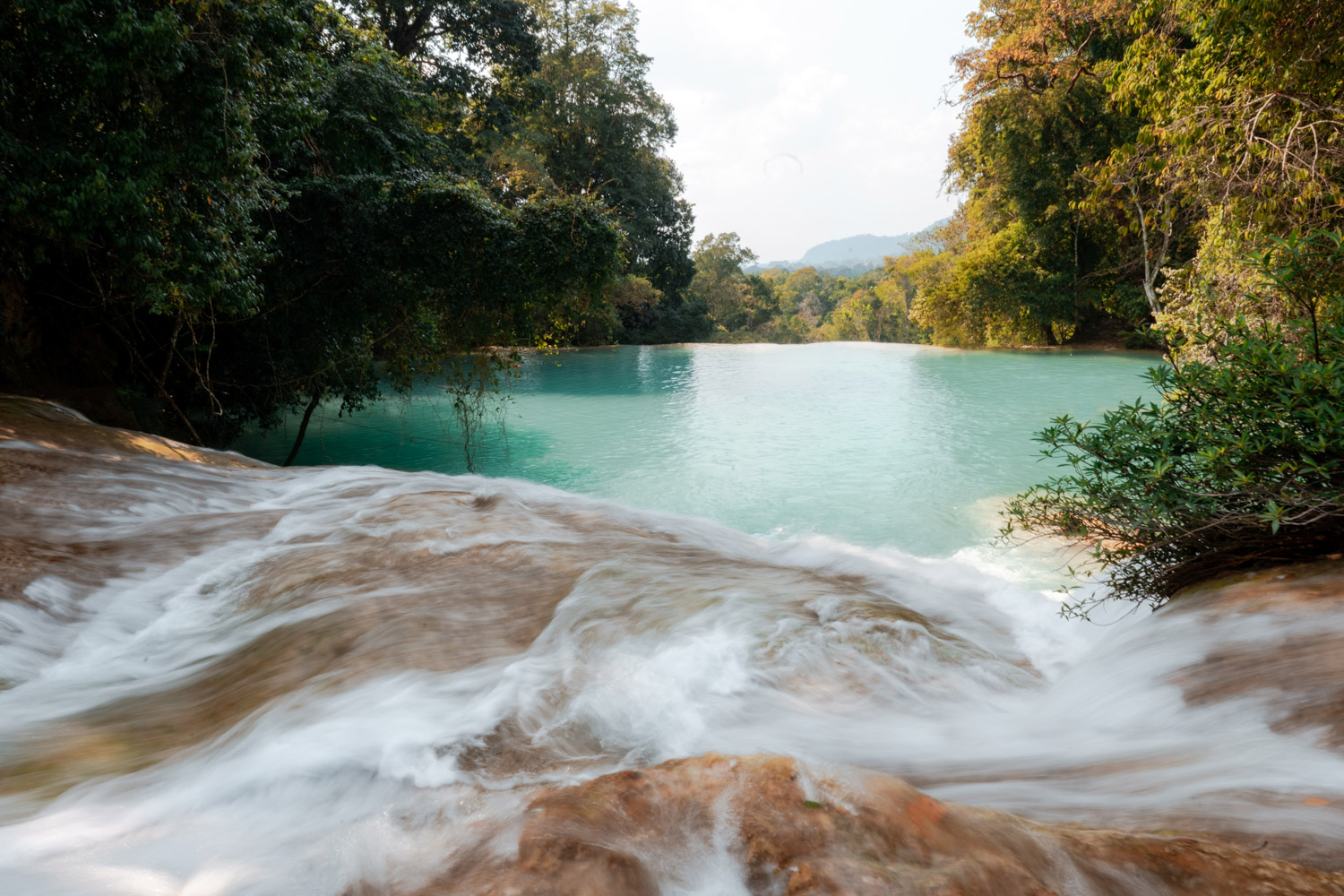
*The link to G Adventures is shared for those keen to follow a similar itinerary. Julia is a contributor of The Wandering Lens and was a paying customer of G Adventures, this was not a paid advertisement, and is not a sponsored post, instead it’s a collection of beautiful images and moments from her experience travelling from Mexico City to Tulum.
Travel and landscape photographer from Australia who is far more comfortable in a pair of flippers than heels! Having worked for publications such as Lonely Planet, Wanderlust and the Sunday Times, Lisa founded The Wandering Lens to share destination guides to the worlds most photogenic places and outdoor experiences.

